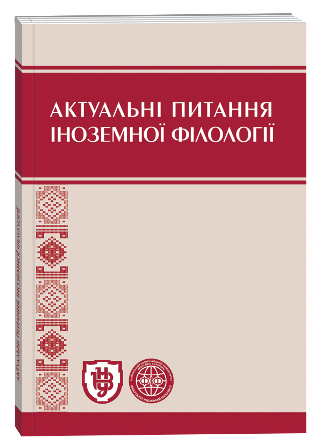SEMANTICS AND STYLISTIC FUNCTIONS OF YELLOW ADJECTIVES IN LATIN (BASED ON WORKS OF THE AUGUST PERIOD)
DOI:
https://doi.org/10.32782/2410-0927-2020-13-27Keywords:
lexical and semantic field, adjectives of color, derivation, lexical item, functional and stylistic features, metaphor, epithetAbstract
The article is devoted to a complex analysis of the semantic and stylistic functions of yellow color adjectives in Latin based on the poetic works of Horace, Ovid and Virgil. The article analyzes the features of the artistic realization of yellow color adjectives. The semantic structure of the main color designations is analyzed. The nucleus, perinuclear, peripheral and diffuse zones are distinguished. The lexical and semantic field of yellow color adjectives is quantitatively rich and semantically embranched, as it includes lexical units that denote different shades of yellow color. Research has shown that the lexem flavus is the semantic center of the lexical and semantic field. The perinuclear zone consists of auratus, aureus, croceus, flavens, inauratus, luteus, which are allocated to this group on the basis of color saturation. Lexical units cereus,fulvus, gilvus, luridus, murreus, pallens, ravus, in the meaning of which yellow color loses brightness, so the balance of color expression is removed towards dark or light tone, will include the periphery of the field. In the diffuse zone we distinguish flammifer, igneus,igniferus. Two main functions of word formation nominative and expressive and stylistic are indicated. The meaning of yellow color adjectives and their individual authorial transformations are revealed. Color definitions help to retrace how the ambiguity of words was formed and developed. The semantics of yellow color help to trace the movement from a specific comparison to a color generalization. Polysemy, metaphor, and epithet proved to be especially expressive functional and stylistic means. Bright artistic emotional and expressive images are created with the help of these trails which attract the reader’s attention.The semantic content of the concept of yellow reflects not only the feelings and thoughts of poets, but also social phenomena in the life of ancient society. However, the choice of the word is primarily in fluenced by the breath of antiquity and the sense of color by the authors.
References
Hesiod. “Opera et Dies”. URL: http://ae-lib.org.ua/texts/hesiod__opera_et_dies__ua.htm
Bychkova, Lyubov. 2003. Kolorystychna kartyna antychnoho svitu. Kyiv.
Borodyna, Melytyna. 1979. K typologii i metodyke istoriko-semanticheskikh issledovaniy. Leningrad: Nauka.
Vasilevich, Anton. 1987. Issledovaniye leksiki v psykholingvisticheskom eksperymente. Moskva: Nauka.
Vezhbitskaya, Anna. 1996. Oboznacheniya tsveta unyversaliy zritelnogo vospriyatiya. Moskva: Rus. Slovari.
Gete, Iogann. 1996. K ucheniyu o tsvete. Moskva.
Gete, Iogann. 1976. Ocherki ucheniya o tsvete. Moskva: Nauka.
Dvoretskiy, Iosyf. 1976. Latinsko-russkiy slovar. Moskva: Russkiy yazyk. 9. Horatius Flaccus, Quintus and Ovidius Naso, Publius, and Vergilius Maro, Publius. URL: http://www/perseus.tufts.edu/
Malinauskene, Nadezhda. 1987. Nekotoryye osobennosti sistemy tsvetooboznacheniy v yazyke Homera. Moskva.
Malinovska, Oksana. 2007. “Synonimiya starohretskikh prykmetnykiv zi znachenniam “neshchasniy” u trahediyakh Eskhila, Sofokla i Evripida”. PhD diss., Lviv.
Normanskaya, Yuliya. 2007. Tsvetooboznacheniya v sanskrite. Moskva: KomKniga.
Panko, Tetiana. 1974. “Slovo „zolotyy“ u poesii I. Franka”. Kiyv: Nauk. Dumka.
Rakhilina, Yekaterina. 2007. “O semantike prilagatelnykh tsveta”. Moskva: KomKniga.
Solopov, Andrey. 2007. Tsvetooboznacheniya v latinskom yazyke. Moskva: KomKniga.
Yanyshyn, Petr. 1996. Emotsionalnyy tsvet. Emotsionalnyi component v psikhologicheskoy strukture. Samara.







